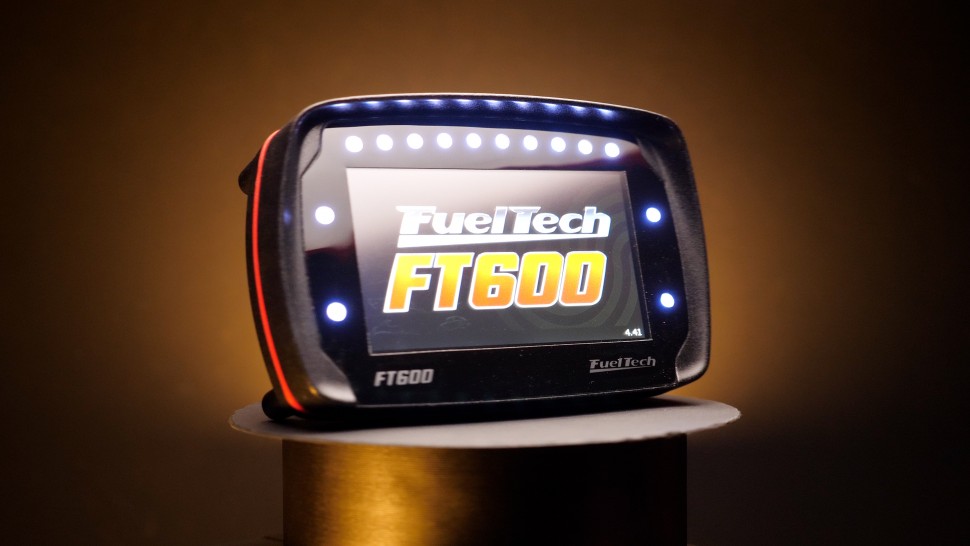| 00:00 |
- When it comes to the way the camshaft opens and closes the valves, we can separate valve trains broadly into those which use mechanical lifters and those which use hydraulic.
|
| 00:10 |
This is an area that confuses a lot of novice engine builders and it affects both the cam design we need to use as well as the way we go about installing and degreeing the cam, so in this module, we'll discuss the differences.
|
| 00:24 |
We'll start by discussing the mechanical lifter, which is also referred to as a solid lifter.
|
| 00:30 |
I'm using the term lifter here, but depending on your specific engine, this may actually be a bucket that the cam lobe operates against, or it could equally be a pedestal that supports the end of a rocker assembly.
|
| 00:44 |
Regardless of the specifics of your particular valve train though, a solid lifter is designed to set and control the clearance between the base circle of the cam lobe and the valve, and with this sort of lifter, we need a small amount of clearance at all times to make sure that the valve properly seats and closes when the engine heats up.
|
| 01:04 |
The problem with a mechanical lifter is that the engine components do wear over time, and this means that the valve clearance or lash will need regular checking and potential adjustment.
|
| 01:16 |
Since the mechanical lifter is quite labour intensive to check and adjust, most factory engines now use a hydraulic lifter or hydraulic lash adjuster as it may also be referred to.
|
| 01:28 |
These lifters use the high pressure supply of engine oil inside the engine to pump up an internal mechanism inside the lifter which expands to take up the valve lash.
|
| 01:38 |
This results in a valve train that operates with zero clearance between the base circle of the cam and the valve.
|
| 01:45 |
The advantage of the hydraulic lifter is that they are low on maintenance and when they are in good condition, the also result in low valve train noise.
|
| 01:54 |
They can be problematic however in some high performance applications, and particularly at high sustained RPM, or at an engine RPM beyond what the factory engine was designed for, the lifter may not be able to bleed off sufficient oil pressure, which can result in the lifter pumping up.
|
| 02:12 |
In this situation, the valve is held off its seat, and this results in a loss of compression and subsequent drop in engine performance.
|
| 02:21 |
It's important to understand however that we can't freely mix and match between solid and hydraulic cam profiles and lifters though.
|
| 02:28 |
In particular, a solid cam profile will include a clearance ramp that's designed to gently take up the valve lash before aggressively opening the valve.
|
| 02:37 |
Likewise the clearance ramp on the opposite side of the cam lobe gently closes the valve.
|
| 02:43 |
If we use a solid cam profile with these clearance ramps and combine them with a hydraulic lifter, we may end up with problems with the lifter pumping up, even at low engine speeds, and holding the valves open.
|
| 02:54 |
On the other hand, it is possible to use a solid lifter with a hydraulic cam profile, but this does require very tight valve lash in order to not damage the valve train.
|
| 03:05 |
In general, I'd always recommend making sure that your cam profile and lifters are correctly matched, as this will give you the best chance of long term reliability and the least potential for headaches.
|
| 03:17 |
When it comes to lash clearance on a mechanical lifter design, this does need to be carefully measured and adjusted to the cam manufacturer's recommendations.
|
| 03:27 |
Too much, or too little valve lash can both result in damage to the valve train, so care needs to be taken.
|
| 03:34 |
The valve lash will also affect the valve motion and in turn, the valve duration and lift at the valve.
|
| 03:41 |
You should also make regular checks of your valve lash and adjust as necessary to keep it within specification.
|





